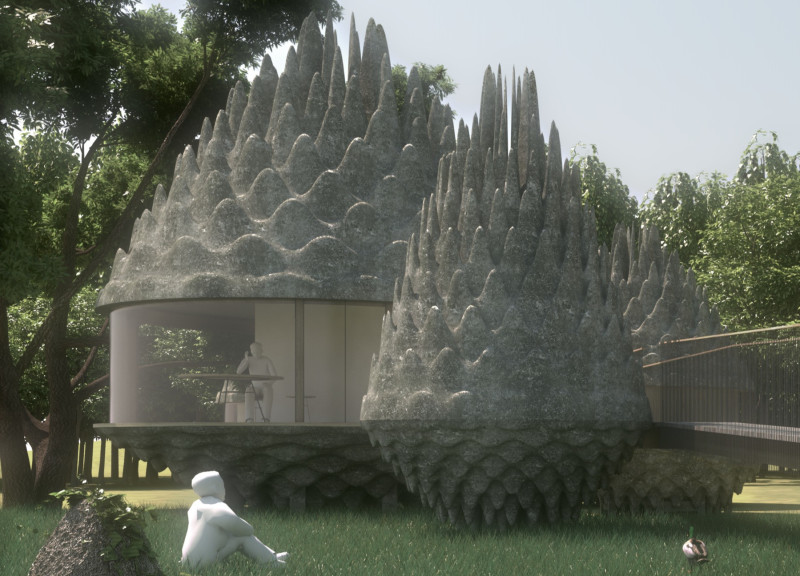5 key facts about this project
The Pinecones Resort is located in the scenic landscape of Latvia and offers a unique accommodation experience. The design draws inspiration from local elements, particularly the pine trees and pinecones found in the region. It also reflects aspects of traditional Latvian architecture through the use of high, sharp roofs. This approach helps create a close relationship between the buildings and the surrounding natural environment, allowing guests to experience nature fully.
Design Concept
The layout features floating units that resemble treehouses or small spaceships. These structures appear to hover above the ground, reducing their impact on the ecology. A wooden footbridge connects the public areas, such as parking and staff residences, to more private guest units and spa facilities. This arrangement promotes movement throughout the site while still respecting personal space and privacy.
Sustainability Features
Sustainability is central to the design of the resort. Geothermal loops provide heating and cooling, ensuring energy efficiency throughout the year. The use of a filtration system that collects lake water serves as a primary resource for the spa. This commitment to environmental care is further emphasized with the inclusion of Solar Window technology, where the clear glass works as solar panels, improving the overall energy performance of the resort.
Material Use
The design incorporates an ETFE pneumatic membrane for the roofs, allowing for the distinctive spiky shapes of the units. This material is lightweight and fully recyclable. Spray Eco Foam is used for insulation, enhancing thermal performance while keeping the structure light. Local wood serves as the main framework, connecting the buildings to the regional context and honoring traditional construction practices.
Every design aspect combines functionality and aesthetic appeal. Each unit stands as its own entity, yet they come together to form a cohesive environment that reflects Latvia's natural beauty. The playful shape of the roofs interacts with sunlight, casting interesting shadows that change over time, enriching the overall experience for guests.


























